It’s often said that money doesn’t really change people, it only amplifies what they already are. When you electrify a car, especially one with a legendary name like the Porsche 911, you could argue that it shouldn’t fundamentally change the car, but simply amplify what it already was. With the 2025 911 Carrera GTS Hybrid, Porsche has achieved just that.
Yes, if you didn’t know, the Porsche 911 is now available as a hybrid. But it’s one of those hybrids that you wouldn’t even know was a hybrid unless you knew. In a sports car that’s been the same shape since 1964, that’s probably a good thing. Whether it’s the move to liquid cooling, turbocharging, automatic shifting, or power steering, the 911 has changed and modernized over the years, but it’s always used new technology to advance its own agenda, not to subscribe to someone else’s.
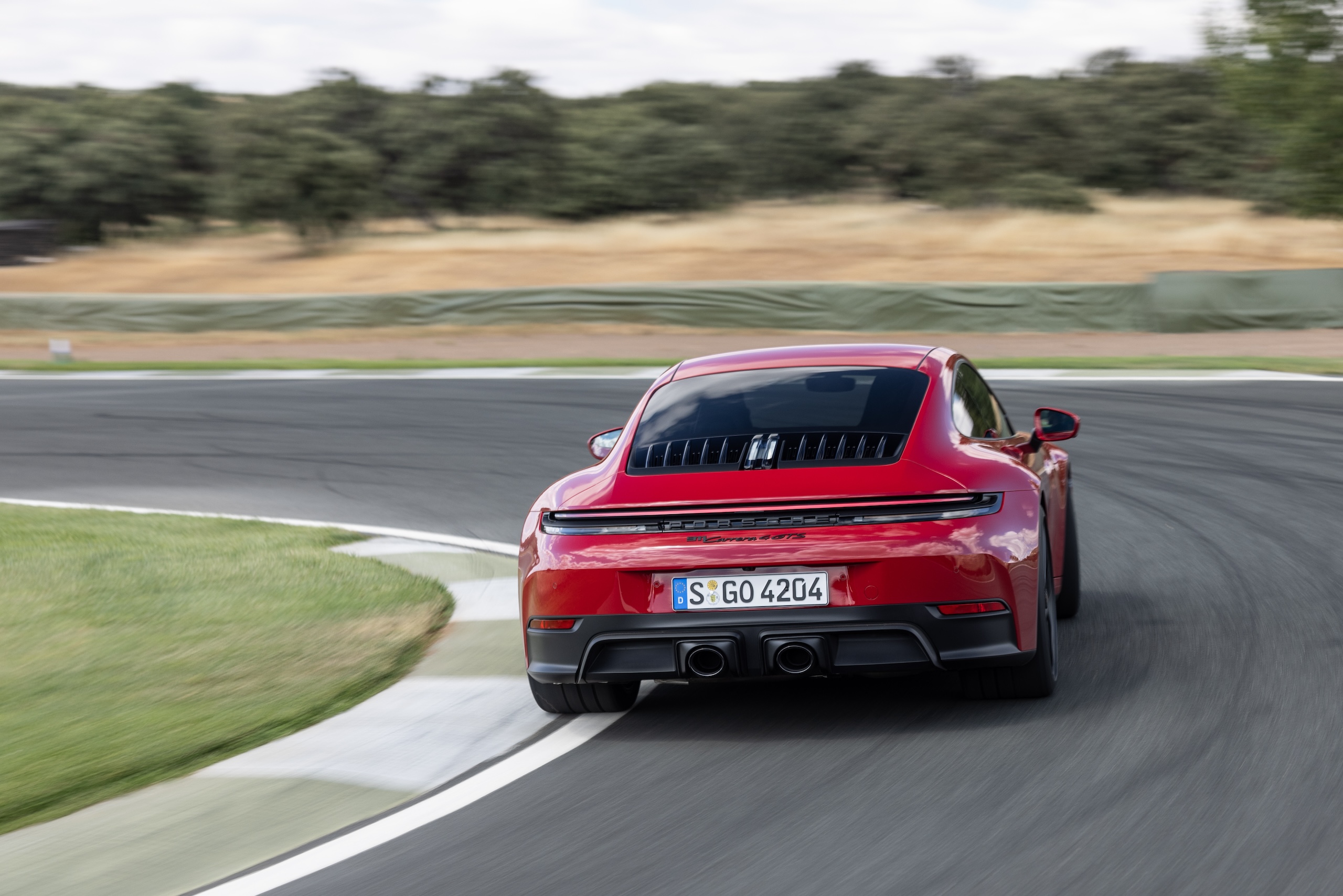
The GTS may now be a hybrid, but the G in GTS doesn’t mean green.
The basics
Building on the 992 generation that first appeared in 2018 (goodness, has it been that long?), the 2025 Porsche 911 sees the sports car get a refresh. In terms of styling, the changes are, as is typical of the 911, quite subtle. The dashboards are slightly different, the taillights are slightly different, and the standard equipment is more extensive than before.
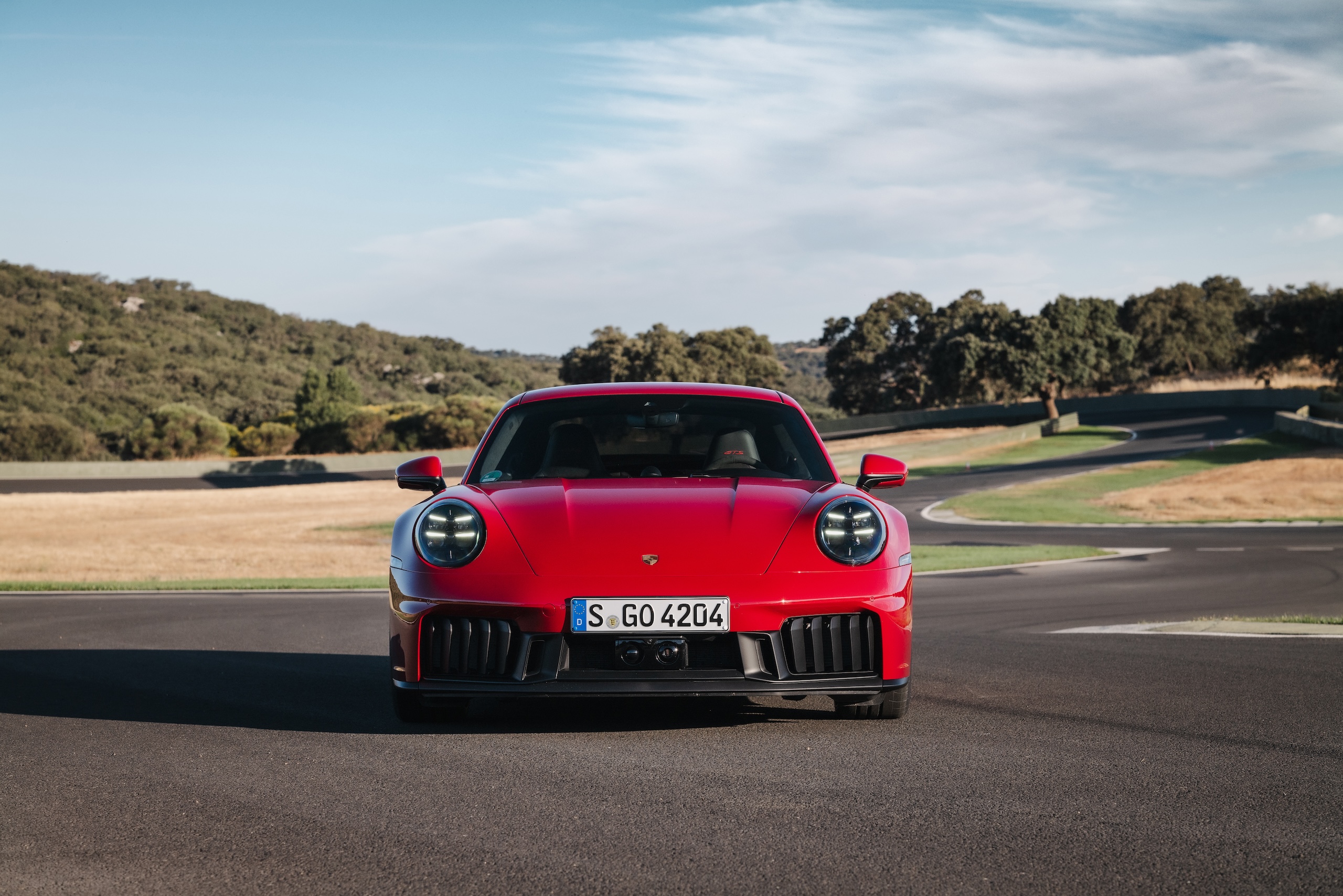
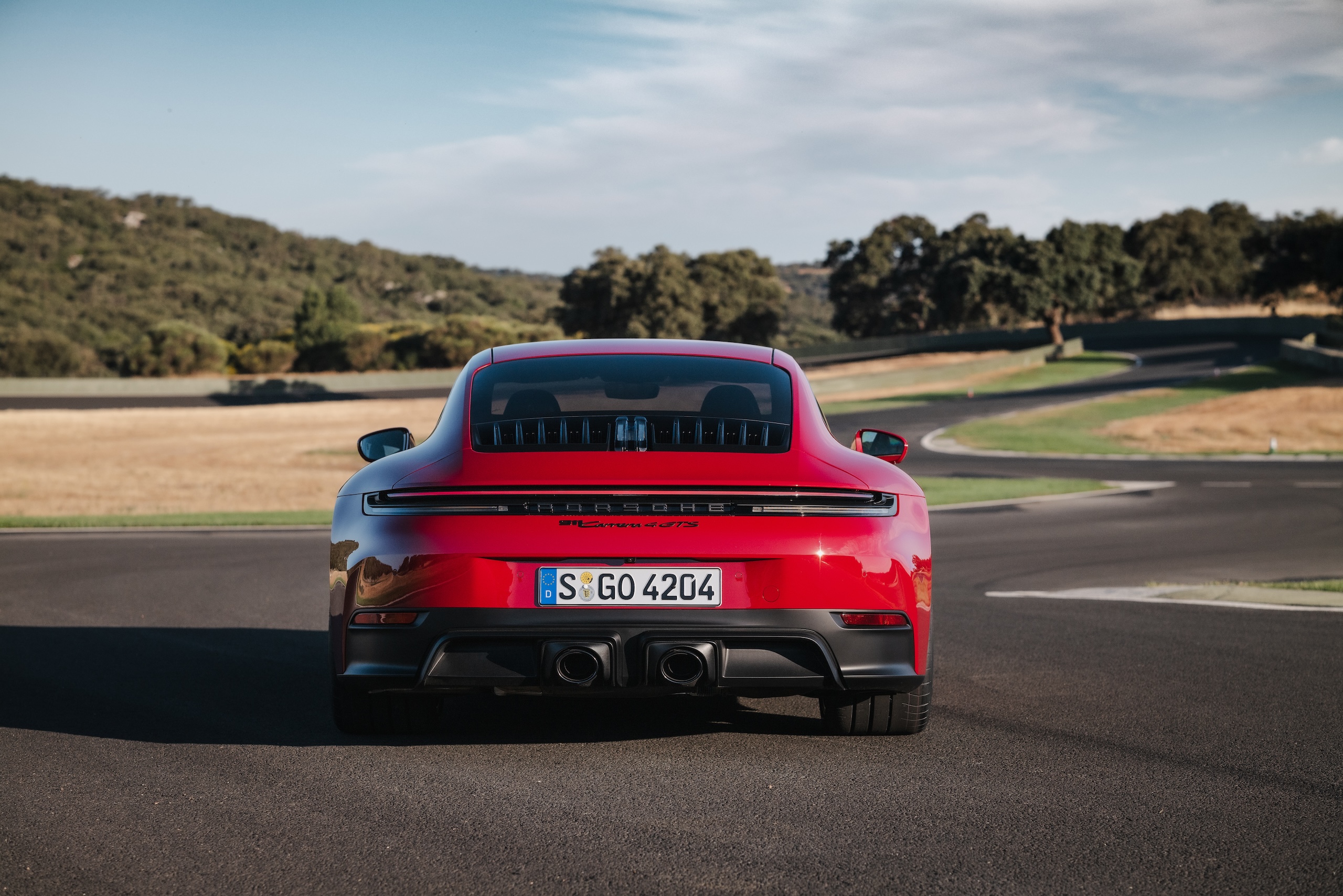
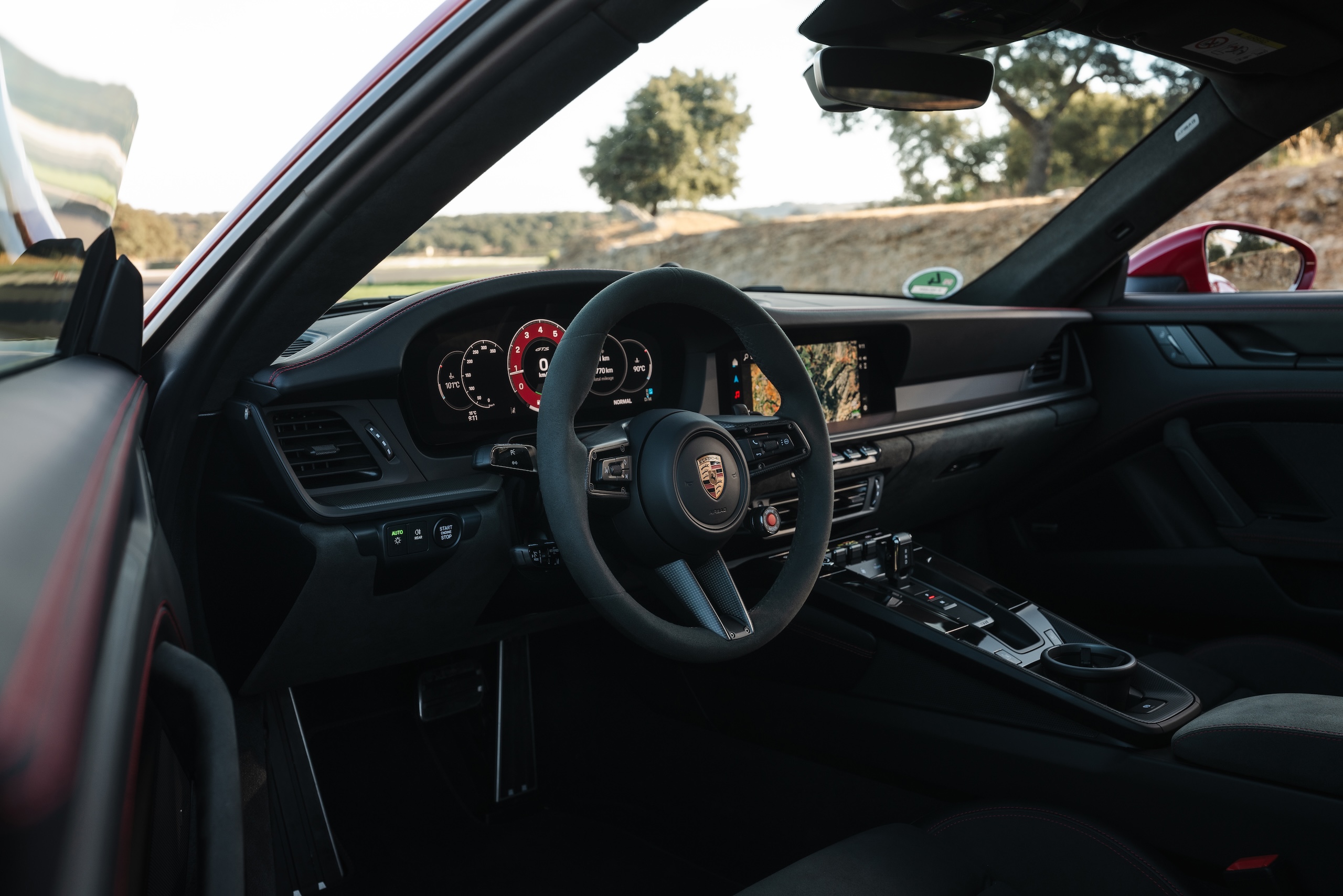
Inside, the 992.2 is largely unchanged, save for two things: the analog tachometer is gone and replaced with a display, and the keyed ignition switch is now a simple button. I’ve already written an entire article about this (and yes, I know I just wrote about how new technology shouldn’t tarnish the 911 spirit of the 911), but both of these changes do indeed feel like throwbacks. And after driving the new 911, I can finally say: yes, I do miss the old setup. However, I’m sure the dentists and lawyers who buy these cars new will appreciate that their 911’s dashboard now matches that of their Cayenne, so there you have it.
The most striking change, of course, is this new GTS hybrid model. Purists need not worry, because Porsche has electrified the 911 in a way that does not fundamentally change the sports car. In fact, I would even say that the change is progressive in terms of driving the GTS “T-hybrid”. And that is intentional.
The T-hybrid is comprised of two electric motors: one dedicated to driving a new exhaust turbocharger and the other integrated into the eight-speed PDK transmission. The latter helps the newly developed 3.6-liter flat-six drive the wheels directly, adding about 53 horsepower and up to 110 lb-ft of torque. Both electric motors draw their power from a 400-volt, 1.9 kWh battery pack located on the front axle for better weight distribution (the motor is in the rear, remember? That battery weighs just 60 pounds and isn’t much bigger than a conventional car battery you might replace at AutoZone, for example).
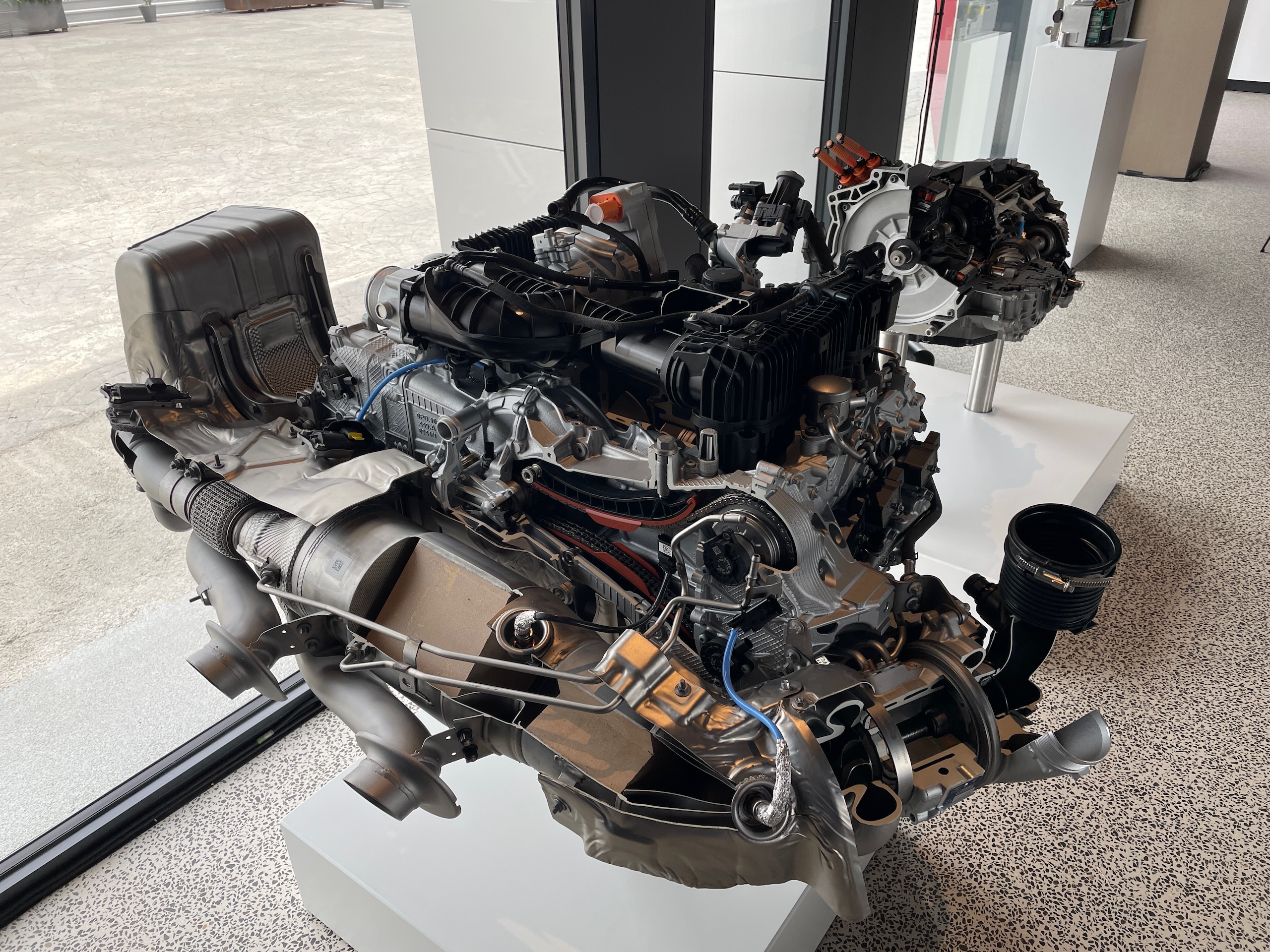
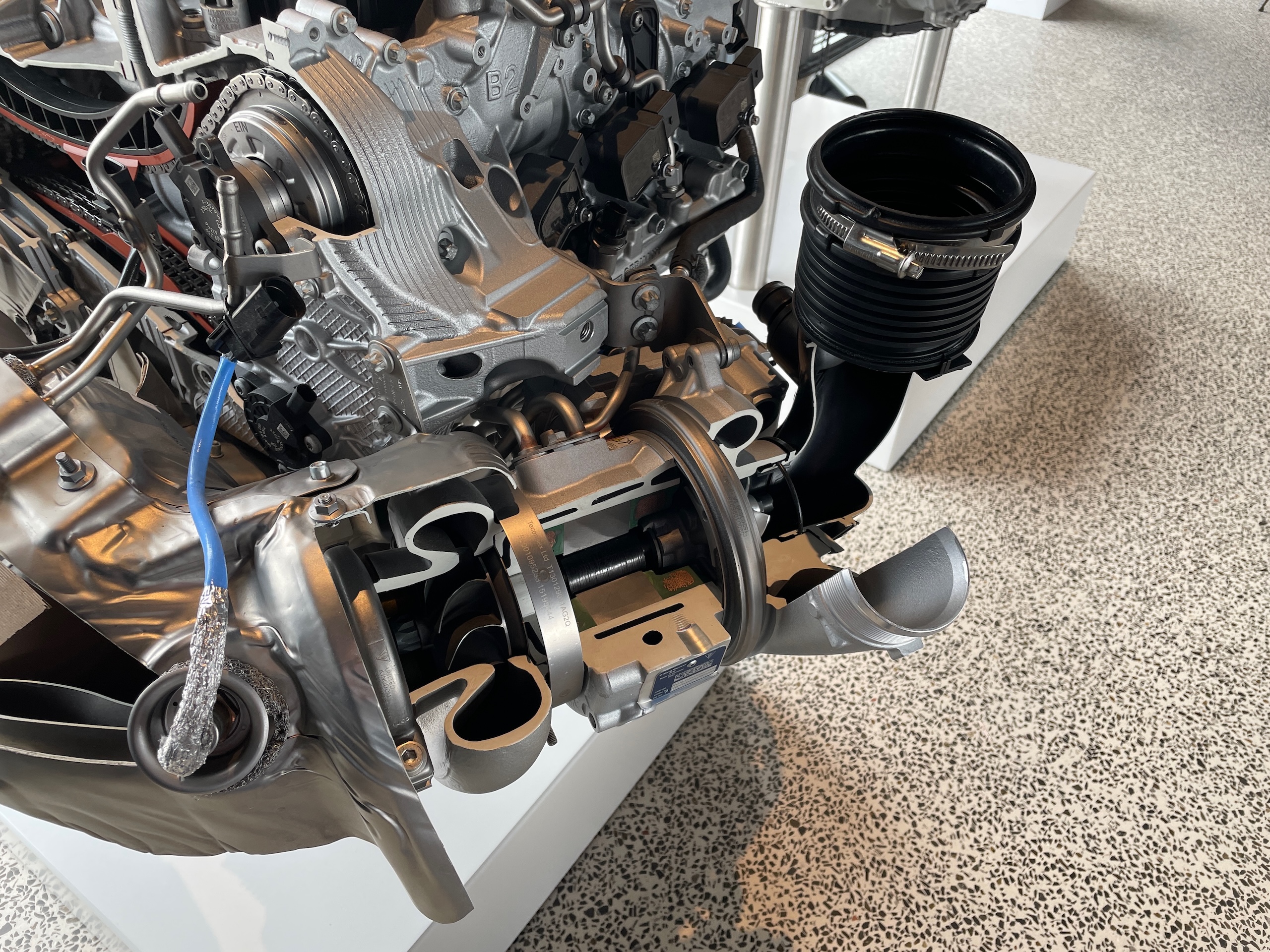
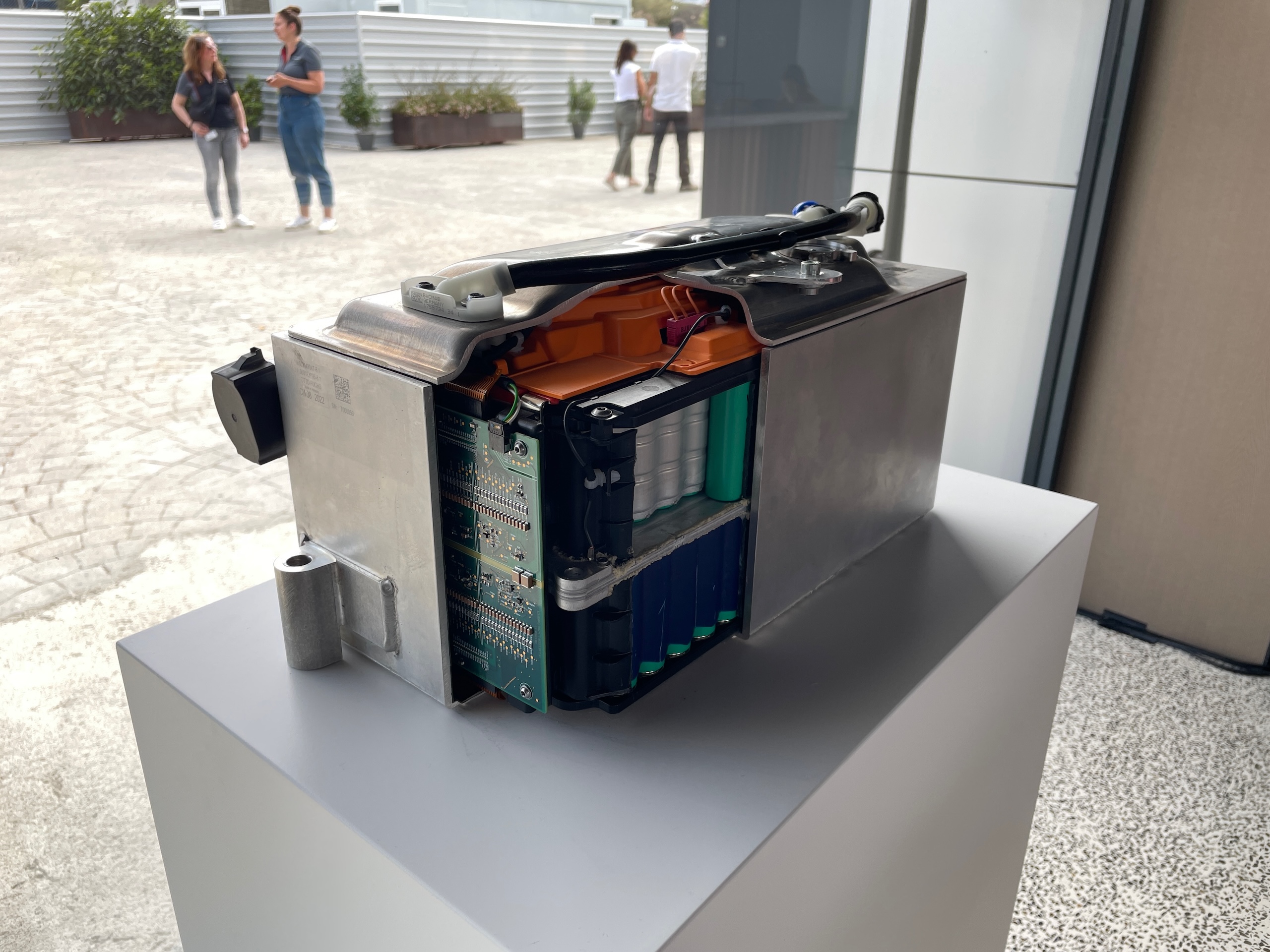
A dedicated electric motor to assist the turbo, a new, larger internal combustion engine, and unlike the Acura NSX and McLaren Artura of the world, there’s no electric-only driving mode. This is how you make a hybrid sports car when you want the “hybrid” part to be a minimal part of the experience. Either way, it all adds up to 532 hp and 449 lb-ft of torque, up 59 hp and 29 lb-ft from the previous non-hybrid GTS, but curb weight is only up 103 pounds. The 911 Carrera GTS Coupe hits 60 mph in 2.9 seconds with launch control and has a top speed of 194 mph.
Driving experience
The first thing to know about driving the 911 Hybrid is that it’s not a plug-in hybrid. According to Porsche, a plug-in 911 was never considered because of the brand’s insistence that the car have a front trunk and usable rear seats. In fact, it’s less of a hybrid than, say, a Toyota Prius, because it never runs on electricity alone. Start it up and the fire is literally on all the time. This subtle approach to electrification colors the entire experience because, overall, the GTS doesn’t feel that different from a conventional 911. It just feels like an amped-up 911.
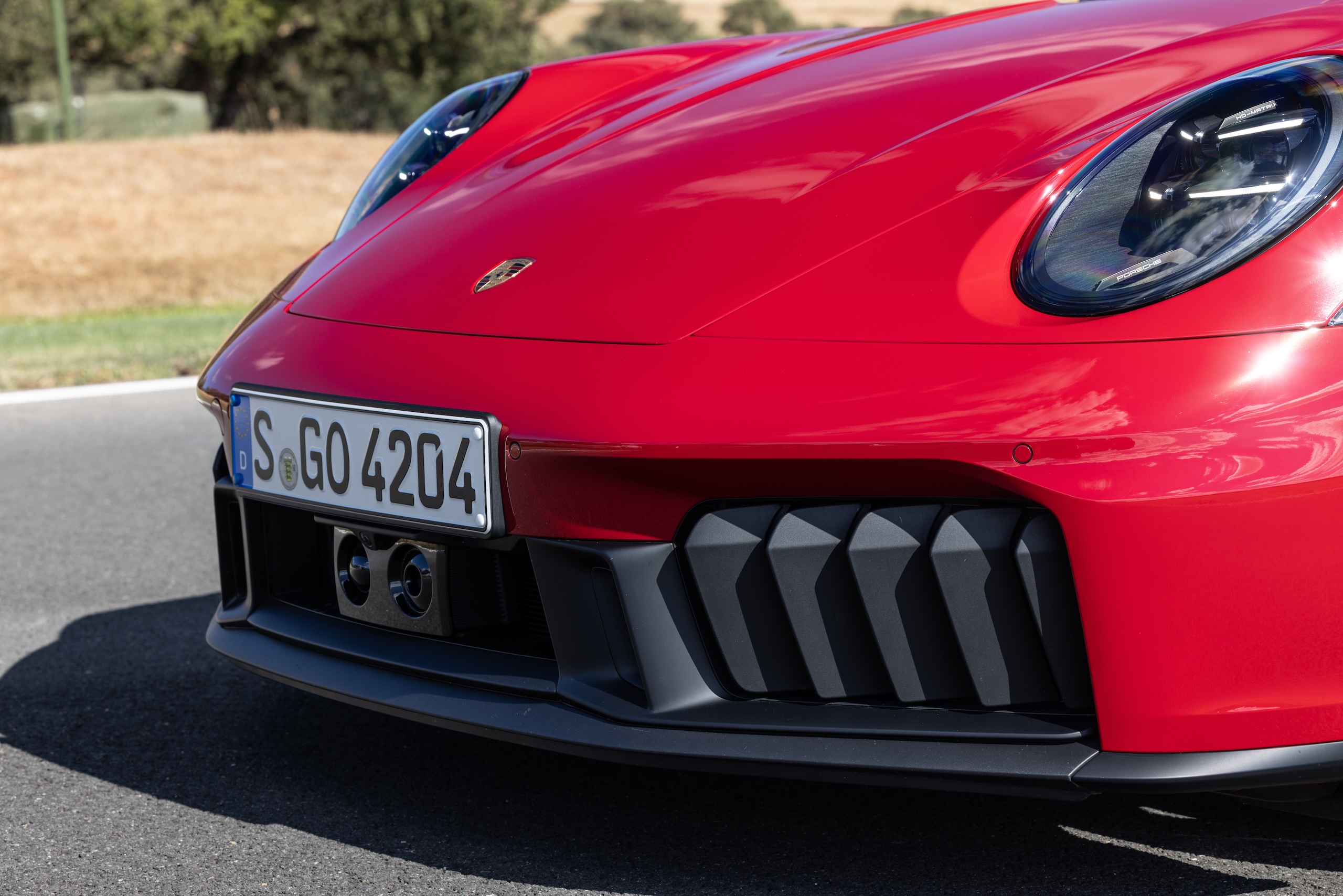
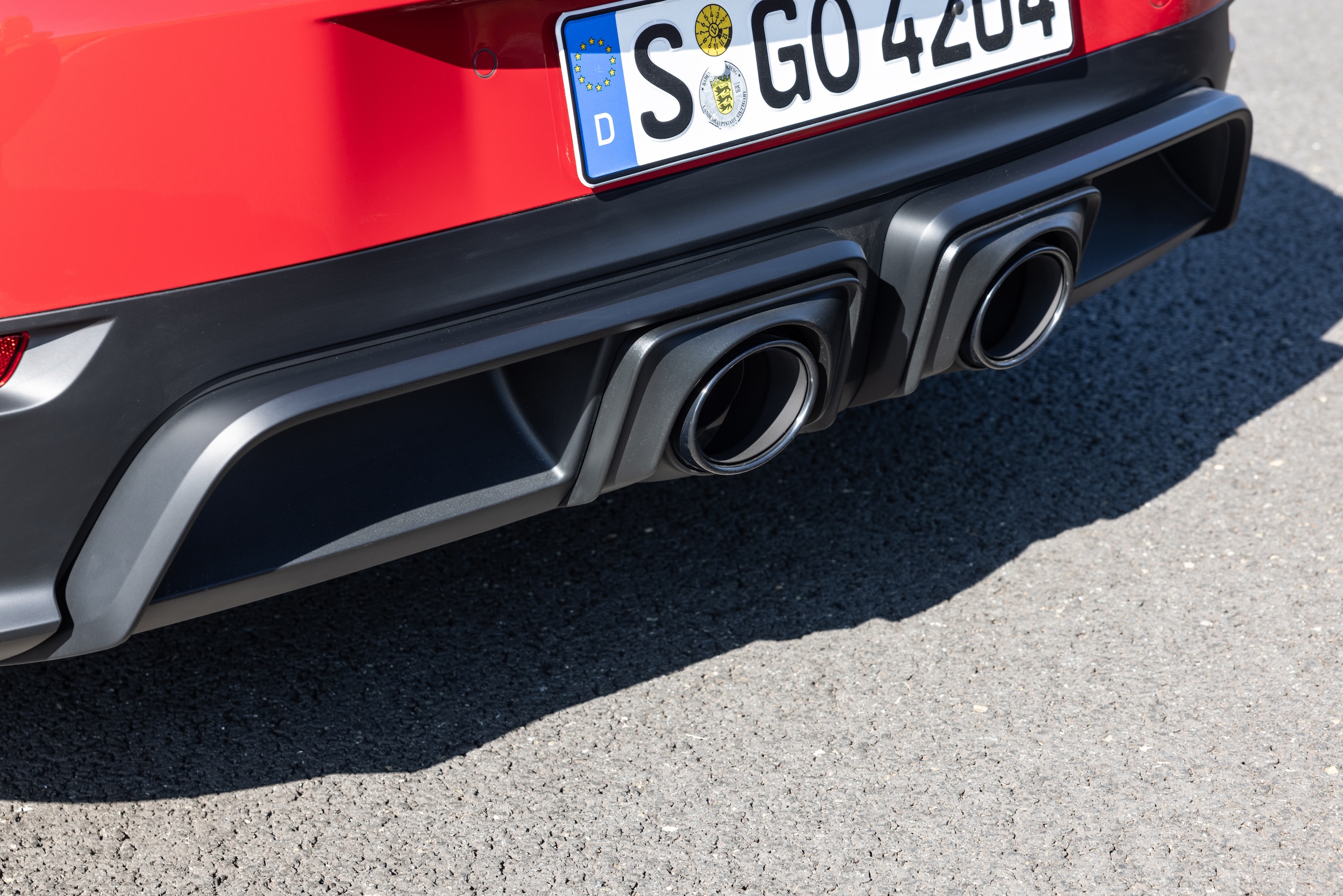
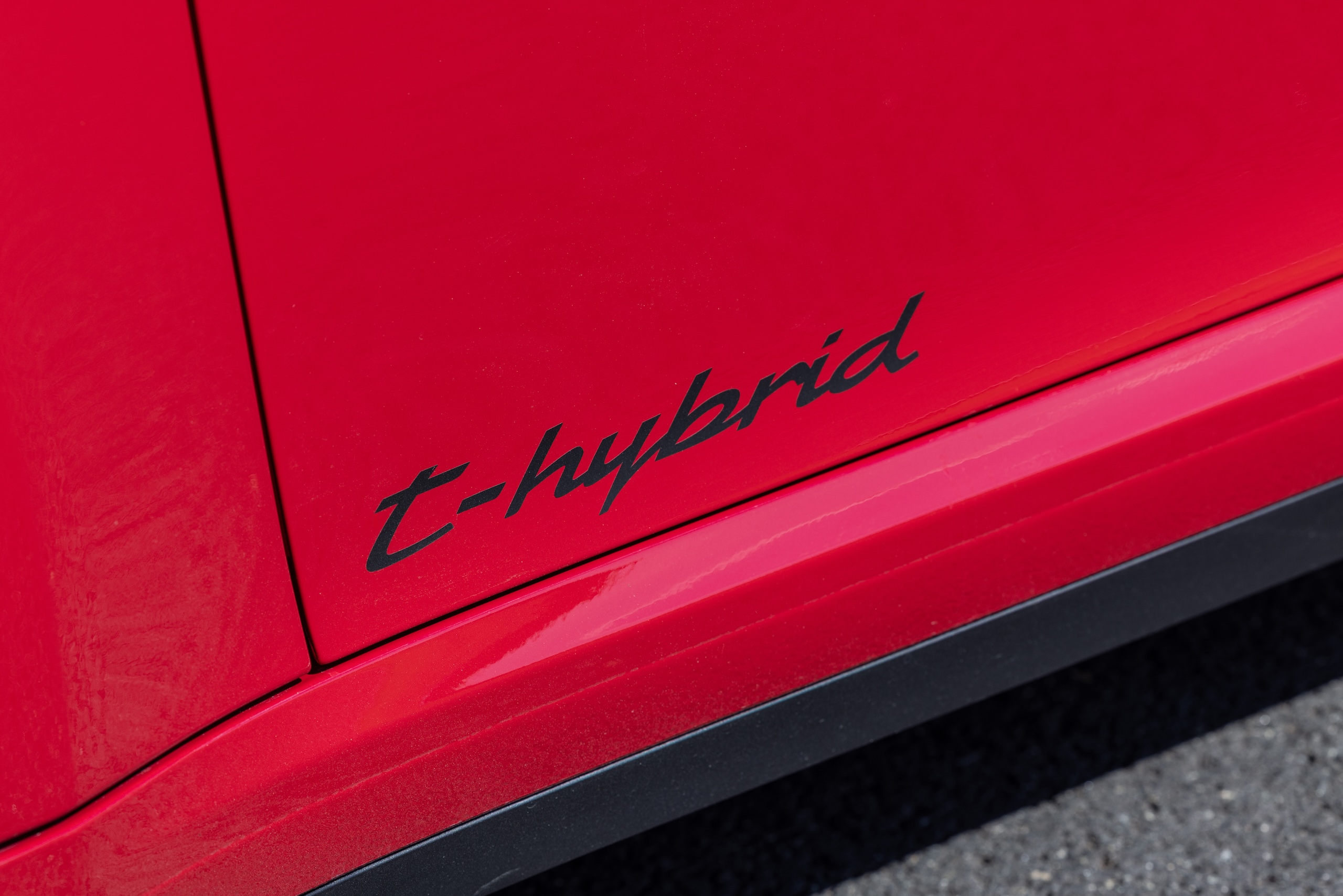
The electrification is subtle, seamless, even hidden. That electrified turbo (that’s what the t in t-hybrid stands for, by the way) is probably the unsung hero of this powertrain. Turbo lag is effectively eliminated and, not for nothing, it makes all the whine and road noises delightfully goofy. pshhh It looks like a modified Subaru. If you look for it, you’ll notice a slightly EV-like smoothness and immediacy in the way the GTS accelerates, but without the hybrid-specific gauges and “t-hybrid” stickers on the doors, most drivers would probably never know it’s a hybrid.
Another indicator of its not-quite-hybrid status is that the GTS can still be had with either rear-wheel drive or all-wheel drive. (In most other cars, going hybrid almost always means all-wheel drive.)
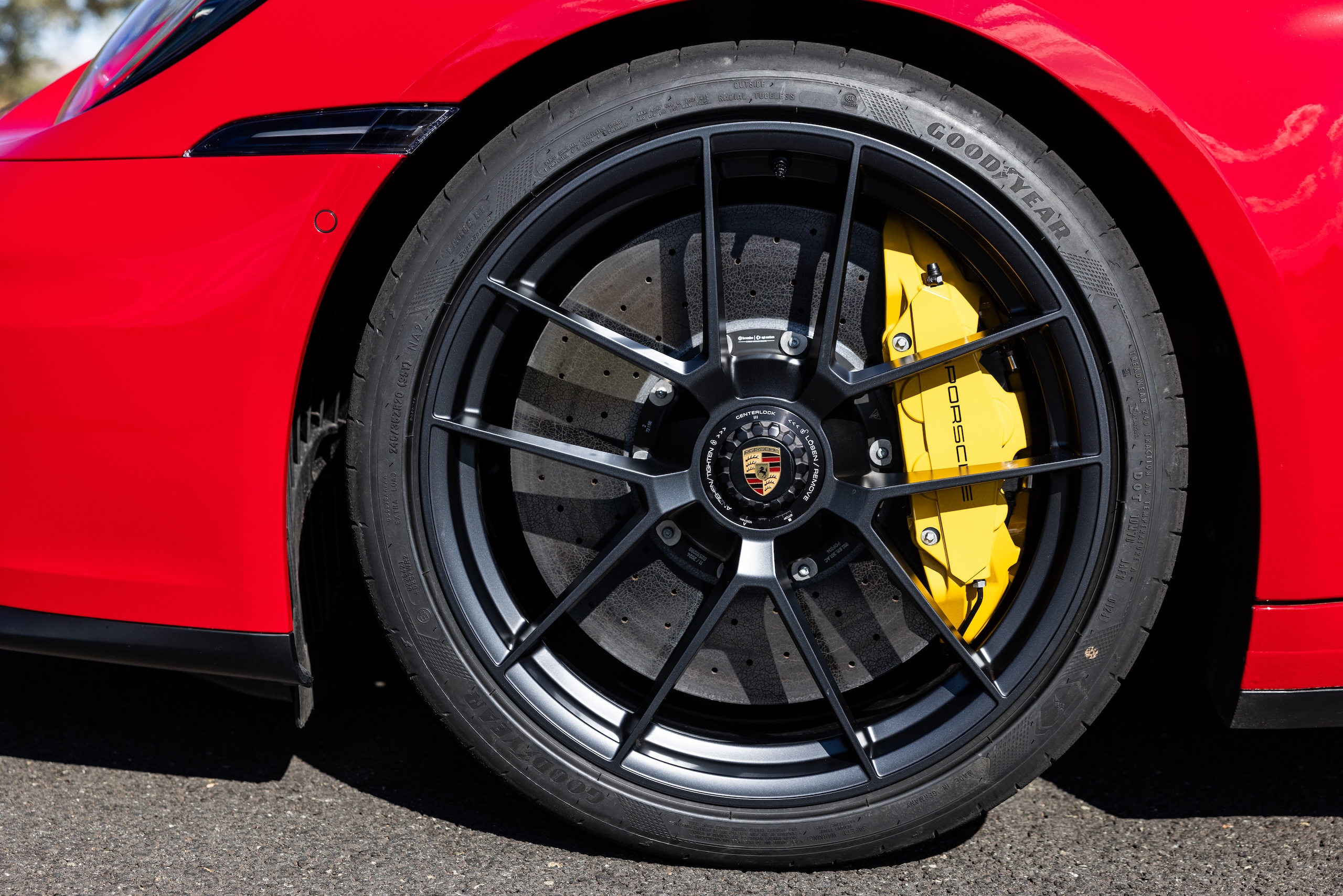
Despite the driven wheels, the hybrid 911 rides, handles and rides perfectly, as any 911 should. The GTS gets wider 315-section rear tires wrapped around new center-locking wheels, while the brakes borrowed from the 911 Turbo now have the ability to recover energy for the hybrid battery (the optional ceramic brakes are larger than before). Rear-wheel steering is now standard, the body-roll-reducing Porsche Dynamic Chassis Control (PDCC) is made more responsive and precise, and the Porsche Active System Management (PASM) Sport lowers the car by 10 mm compared to (under?) the base Carrera and is firmer than before to compensate for the increased curb weight. That new flat-six sits 110 mm lower than its predecessor to accommodate pulse inverters and DC-DC converters.
On the road and track, the 911 GTS is a formidable weapon. Predictable and agile, it bombs, grips and dives with an unerring, granite-like stability that no other car has. The steering isn’t terribly chatty (you’d probably have to shell out a fortune for a GT3 or similar for that kind of fun), but it’s extremely precise and well-weighted. The brakes, the throttle, the body control, all feel extremely solid but adjustable at the same time. Given enough space and solitude, this car reaches prison speeds like no other with astonishing stability. Braking and even any deceleration now triggers regeneration of the hybrid battery, but you’d never know it if the displays didn’t tell you. The left pedal remains a positive, precise instrument that masters the GTS with commanding authority.
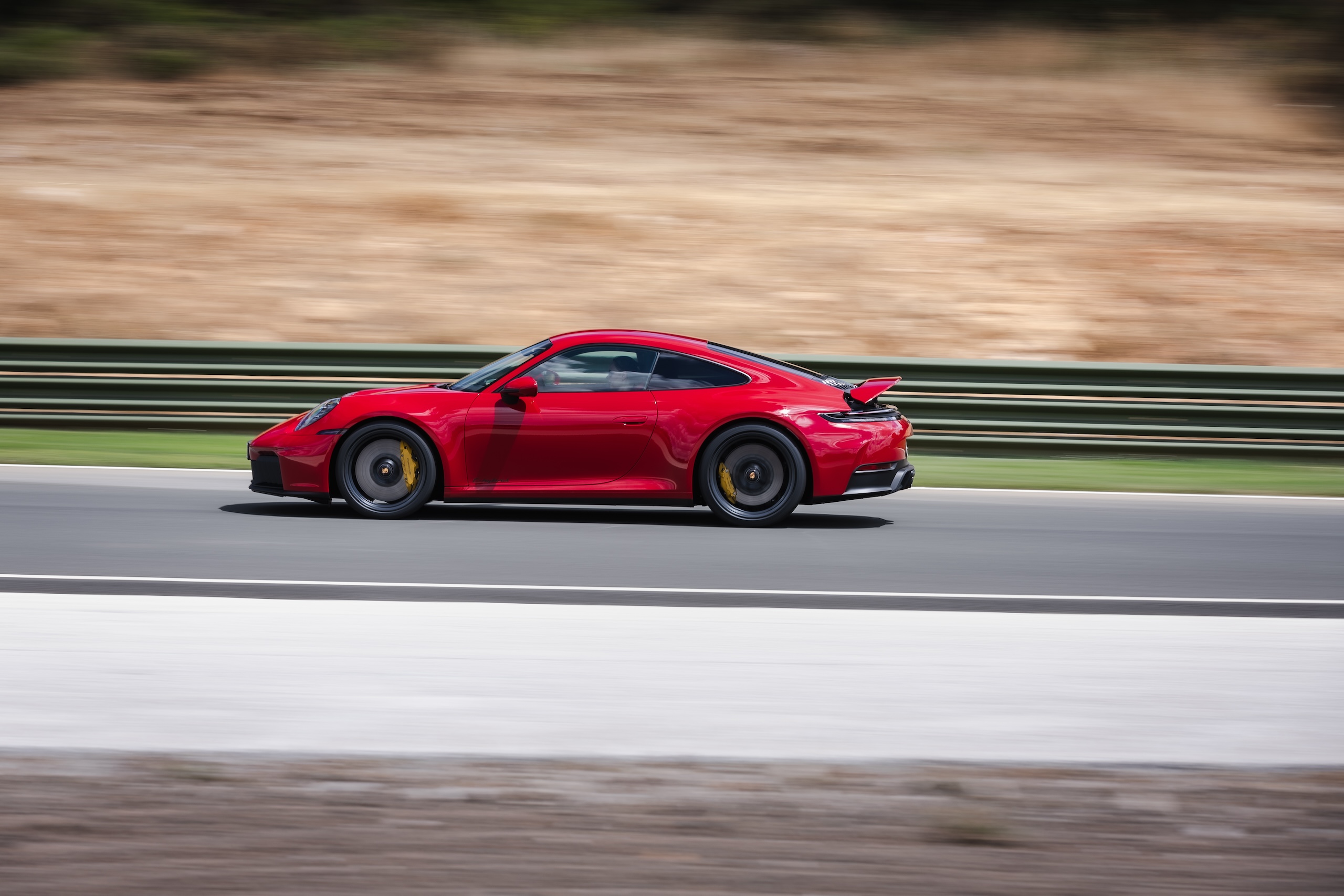
The PDK is a joy to use and feels like a very durable piece of kit, but manual gear changes on the track aren’t as immediate as a supercar, and the paddles themselves, while feeling very robust, aren’t the most exciting thing to grab. Also, as competent and engaging as it is, this car doesn’t do that ‘shrink around you’ thing. The modern 911 is and feels like a big car, a fact amplified by the tight Spanish bends we had as our testing ground for this test.
But given the space available on a closed circuit, the 911 hybrid seems perfectly sized. The Circuito Ascari is 3.4 miles of banked turns, barely-raised straights that masquerade as turns, and tight, autocross-style chicanes. The GTS made light, fun work of it all. There’s a reason the Porsche 911 is to sports cars what the iPhone is to wearable electronics. After years of careful iteration, the damn thing just works.
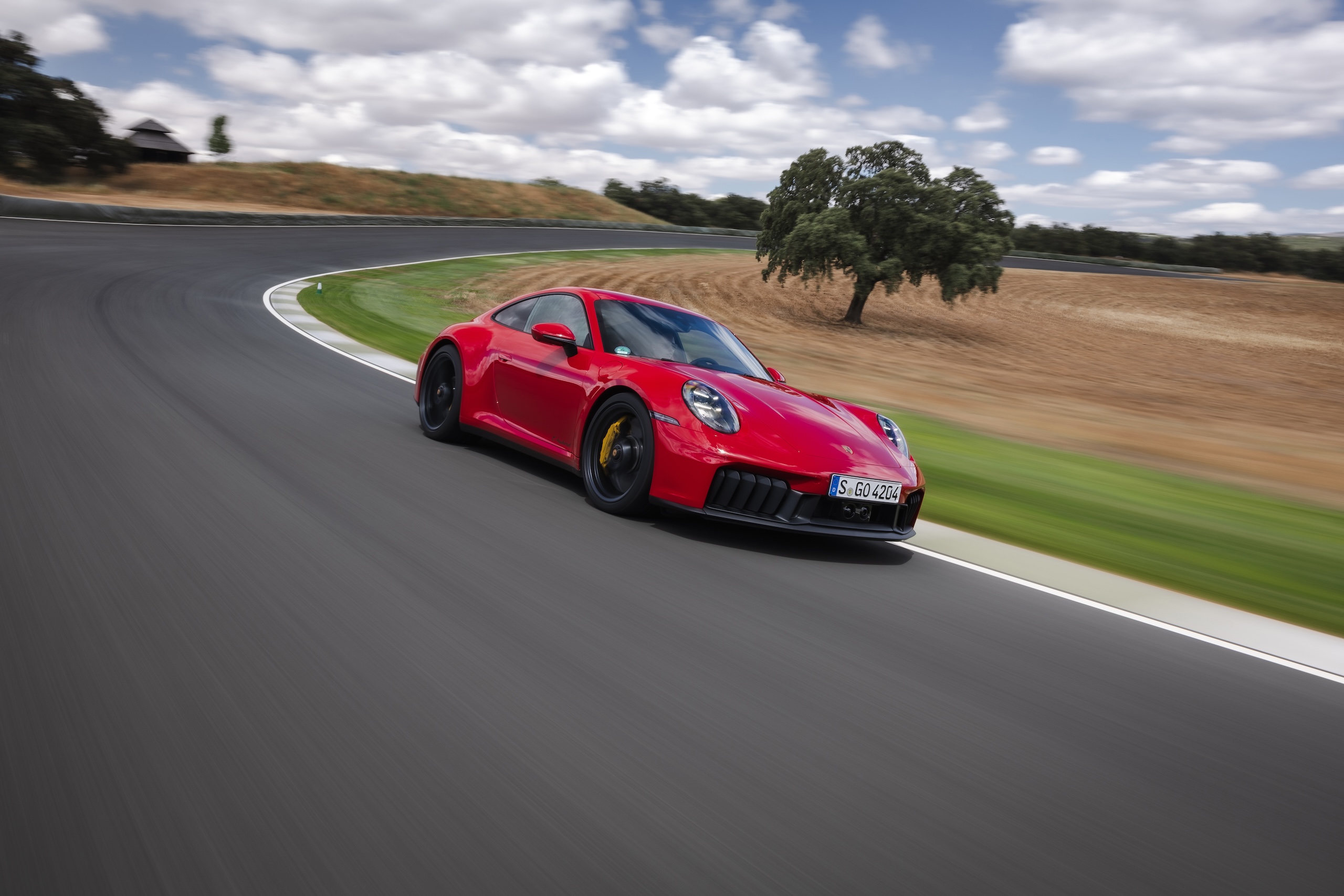
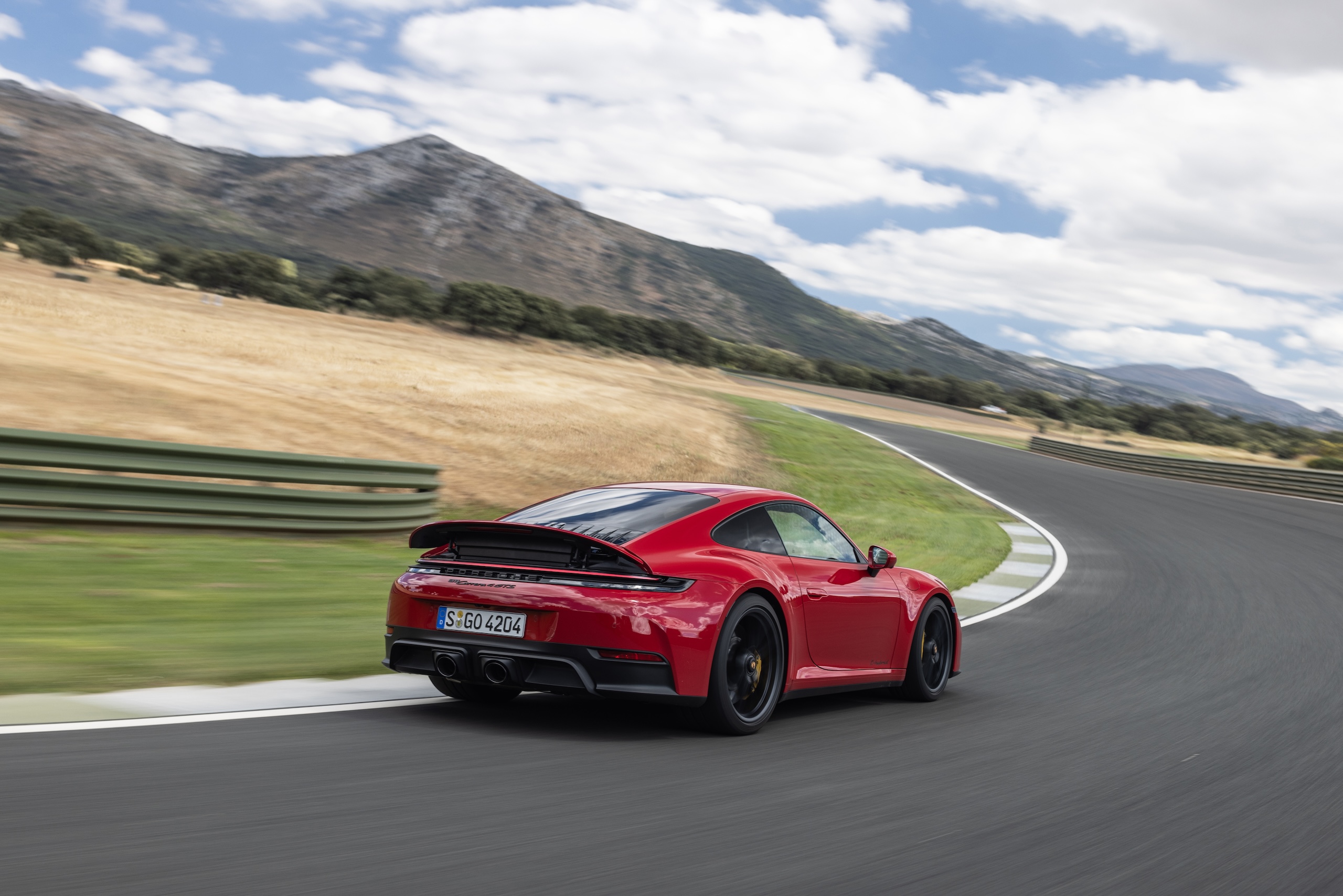
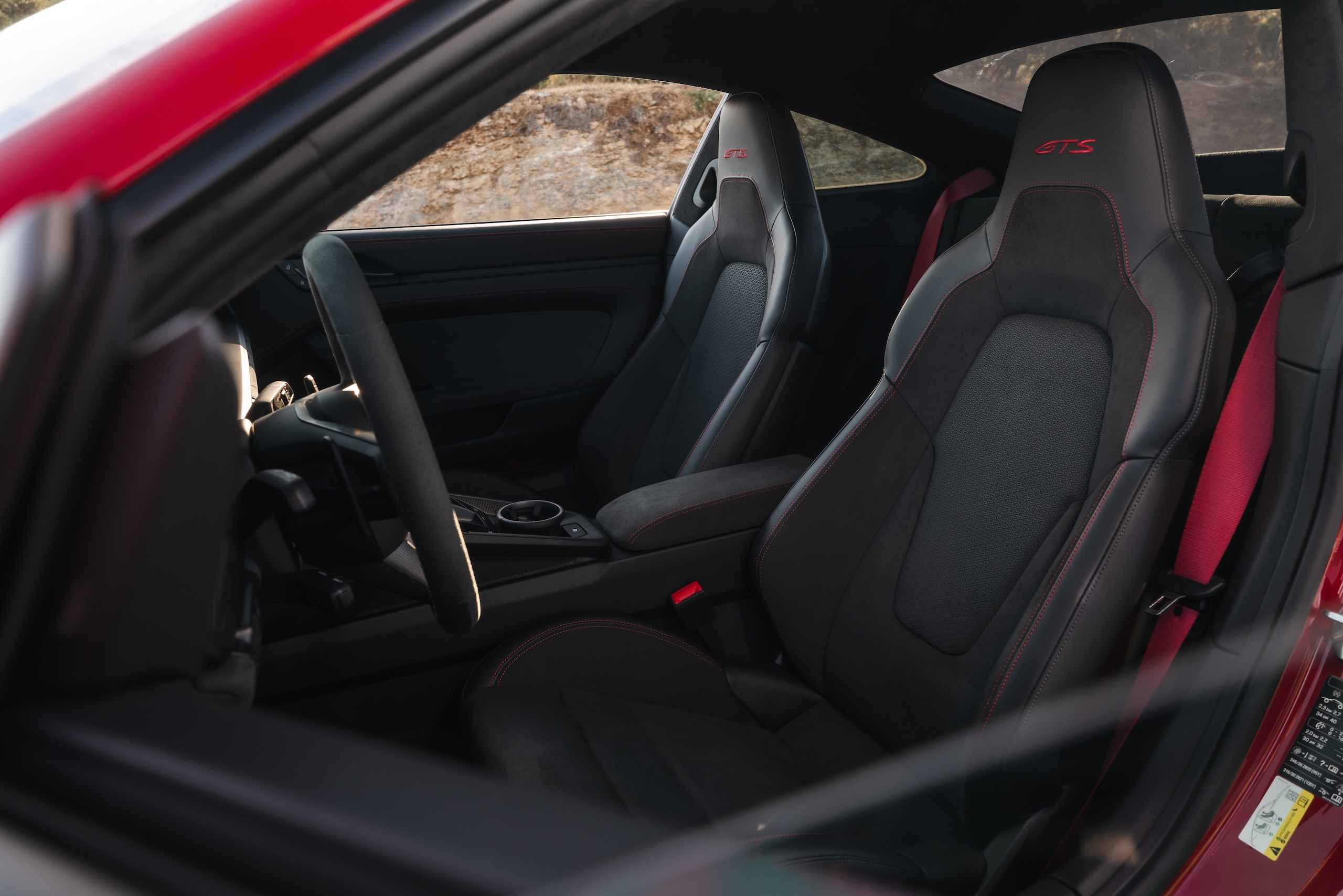
In everyday driving mode, it’s unsurprisingly manageable (after all, everyday performance is the 911’s hallmark), but the slightly lower and stiffer ride does make itself felt, especially when driving it back-to-back with the base Carrera. For that reason, the base car may be the one for you if you never intend to venture onto a racetrack, but I’ll be bringing you more in-depth thoughts on that car on this website soon.
The preliminary verdict
The Hyundai Ioniq 5 N and Maserati Gran Cabrio Folgore are among the most entertaining EVs we’ve driven, largely because they hide their electric nature so well. So there seems to be a theme forming with electrified performance cars: the best ones don’t feel electrified at all. The Porsche 911 may not be an EV (yet), but its first step into the electric world is a good one. The fact that the GTS is a hybrid isn’t shoved in your face, nor is it the reason it’s enjoyable. On the road to electrification, the 911 hasn’t become unbearably heavy or quiet.
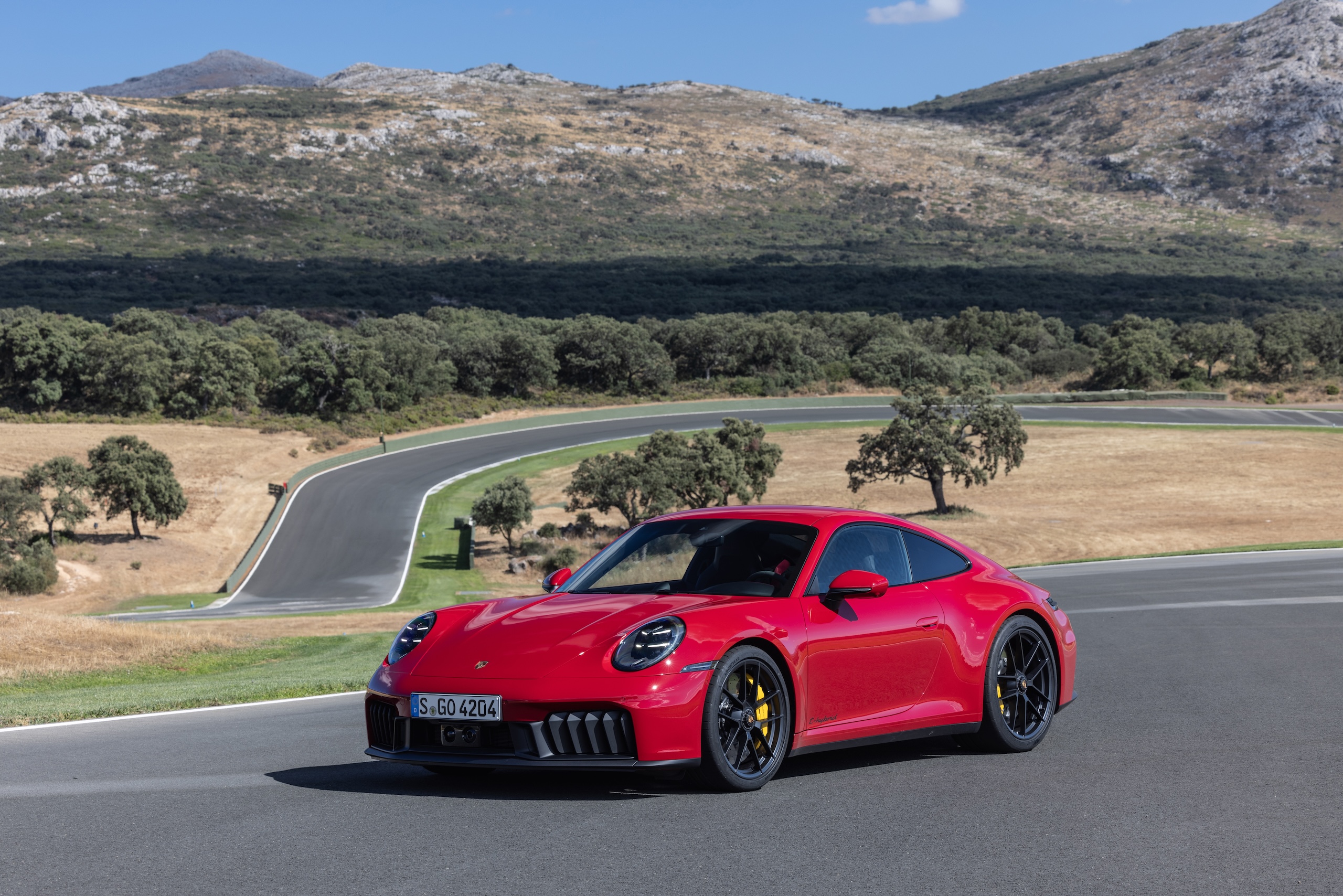
The GTS is simply what it has always been: a more serious beast than the standard Carrera, but not so serious that it becomes harsh, unmanageable or excessive. As a result, the Porsche 911’s core personality remains, and the typical Porsche 911 verdicts still apply. There may be better-looking cars in its class, and more evocative engines. But the 911 GTS offers what is arguably the most complete driving tool of its peers: so solid, so easy, so fast. At the same time, it would be hard to call it “boring,” because it simply isn’t.
It’s controlled drama and exquisite driving.
If you think about it, the Porsche 911 has always been a hybrid car: part track car, part grand tourer. And the fact that the new GTS is a hybrid in terms of powertrain hasn’t changed its status as a hybrid in its purpose. In fact, it’s made it better.
| 2025 Porsche 911 Carrera GTS Spec Sheet | |
|---|---|
| Base price (Carrera 4 GTS Coupe as pictured) | $166,895 ($208,225) |
| Powertrain | 3.6-liter turbocharged flat-six hybrid | 8-speed dual-clutch automatic transmission | Rear- or all-wheel drive |
| Power | 532 |
| Couple | 449 lb-ft |
| Number of places | 4 |
| Loading volume | 4.8 cubic feet |
| Unloaded weight | 3,536 to 3,869 pounds |
| 0-60 mph | 2.9 seconds |
| Top speed | 194 mph |
| EPA Fuel Consumption | To be determined |
| Quick take | Electrification hasn’t spoiled the 911’s magnificence. Quite the opposite, in fact. |
| Score | 9/10 |
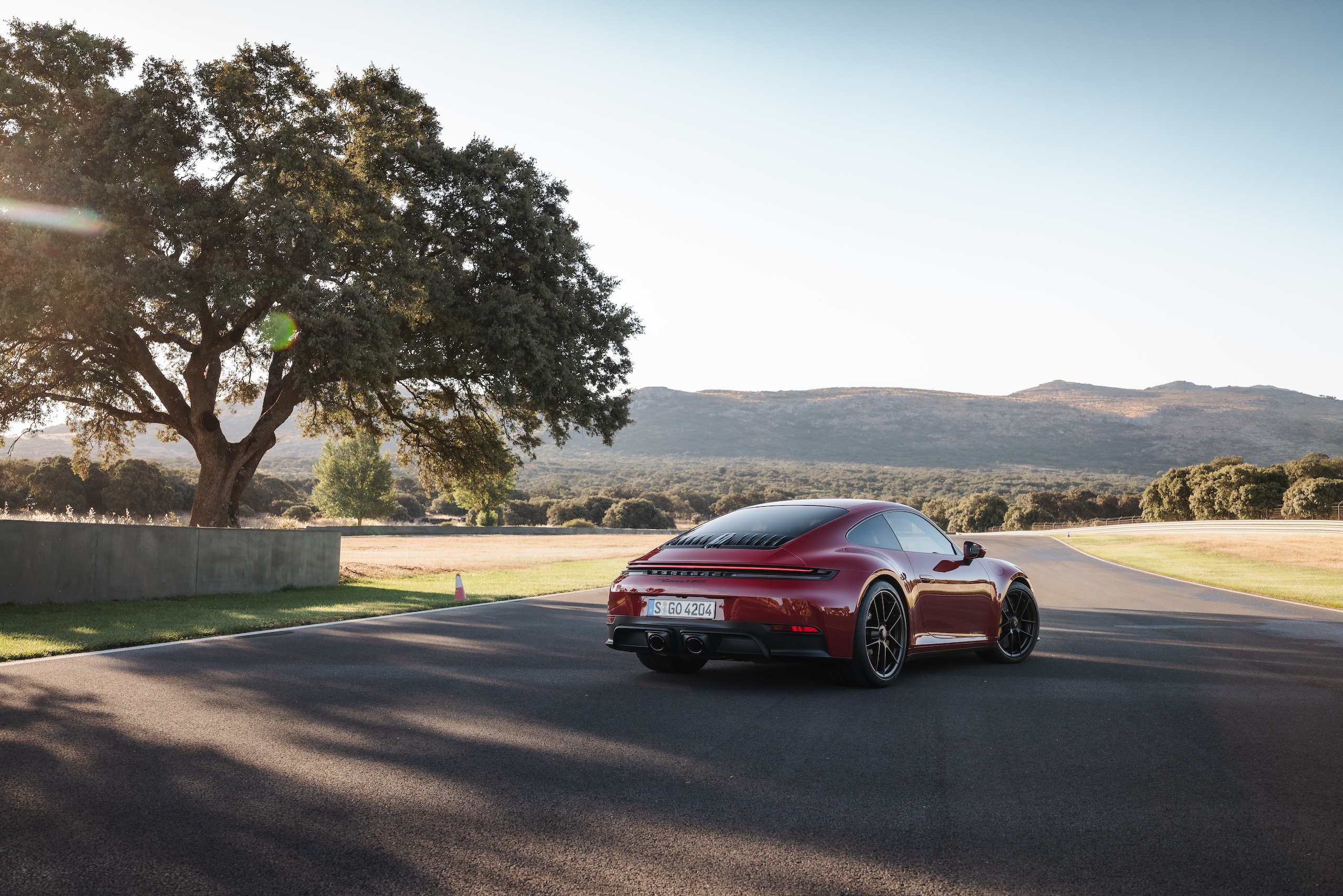
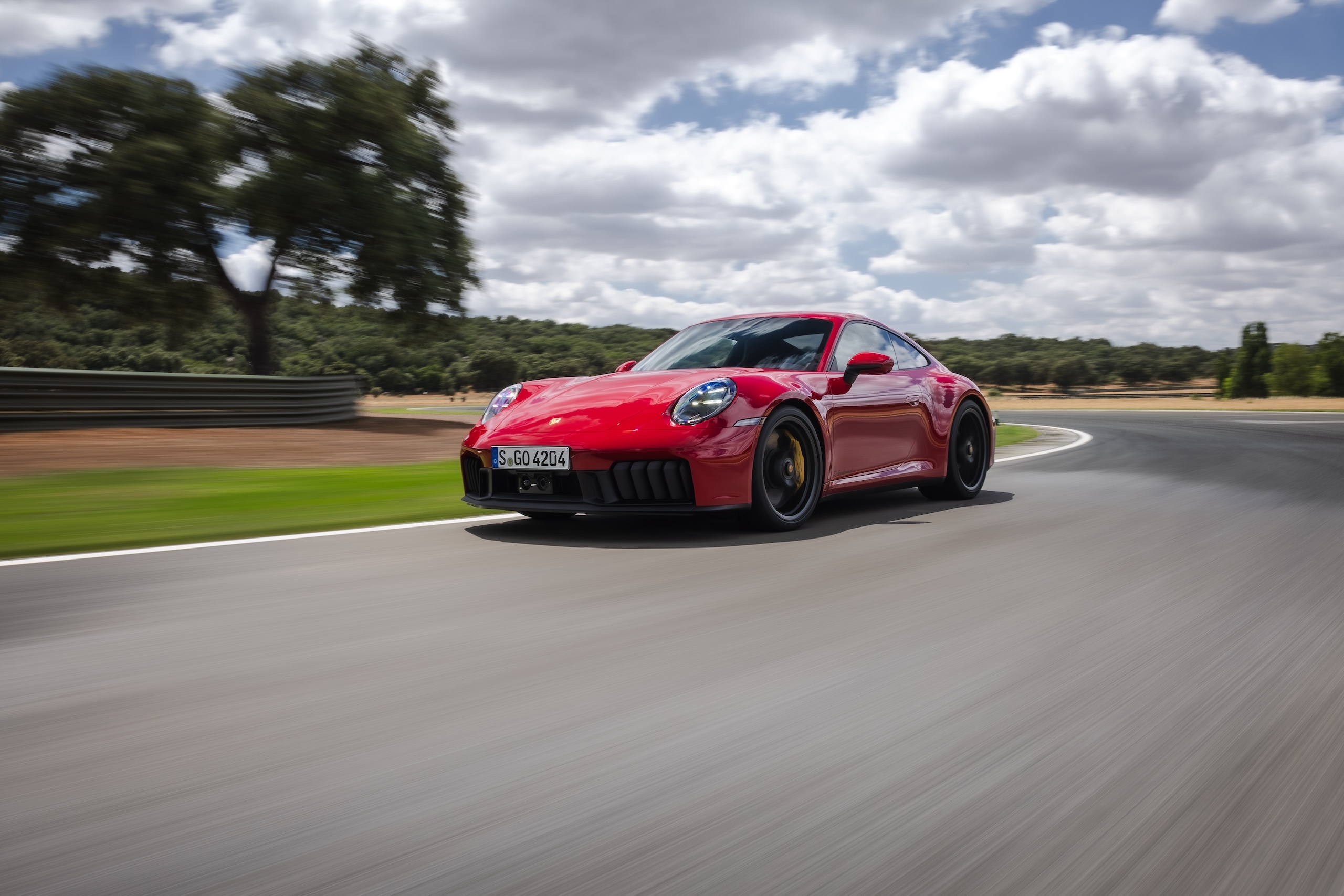
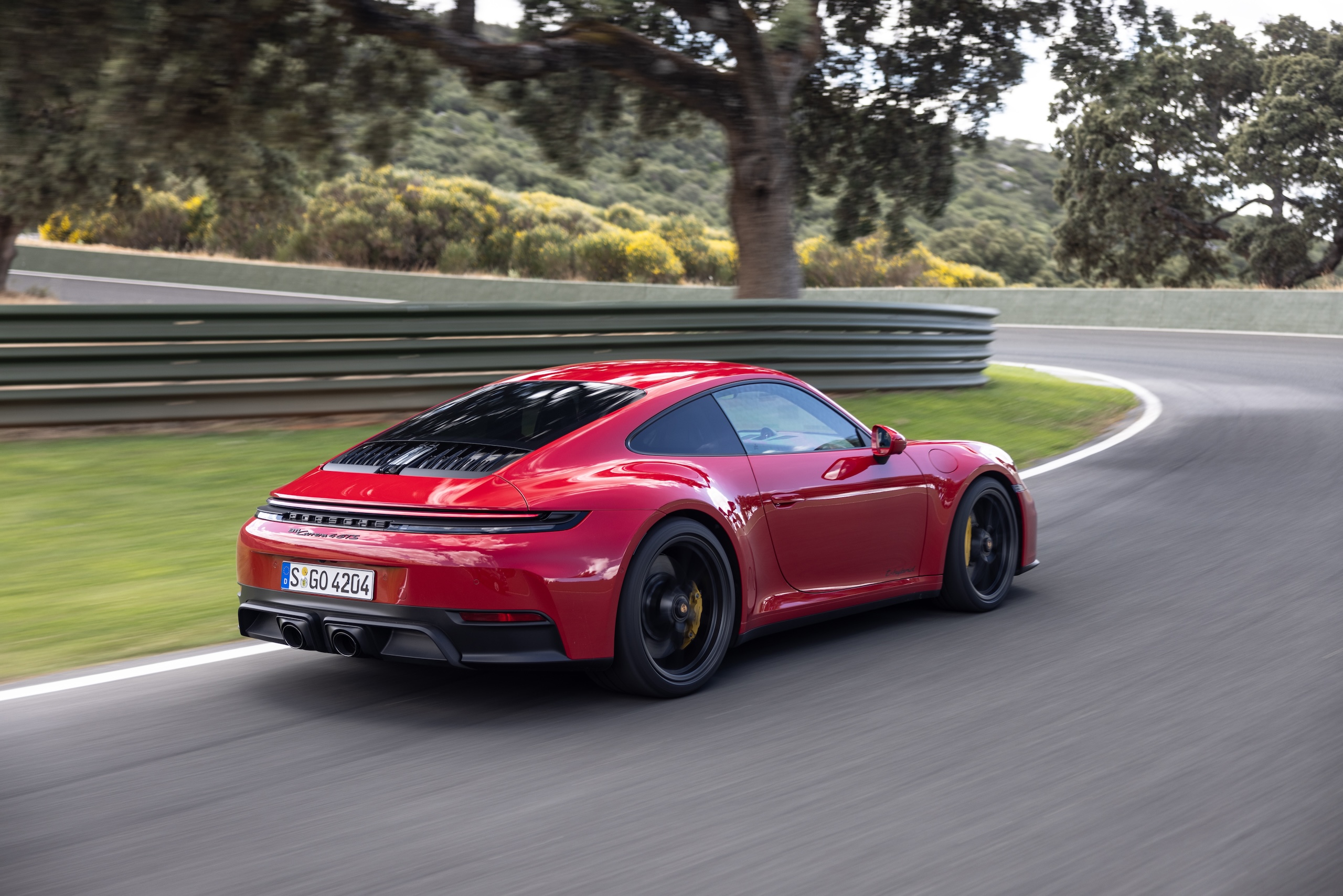
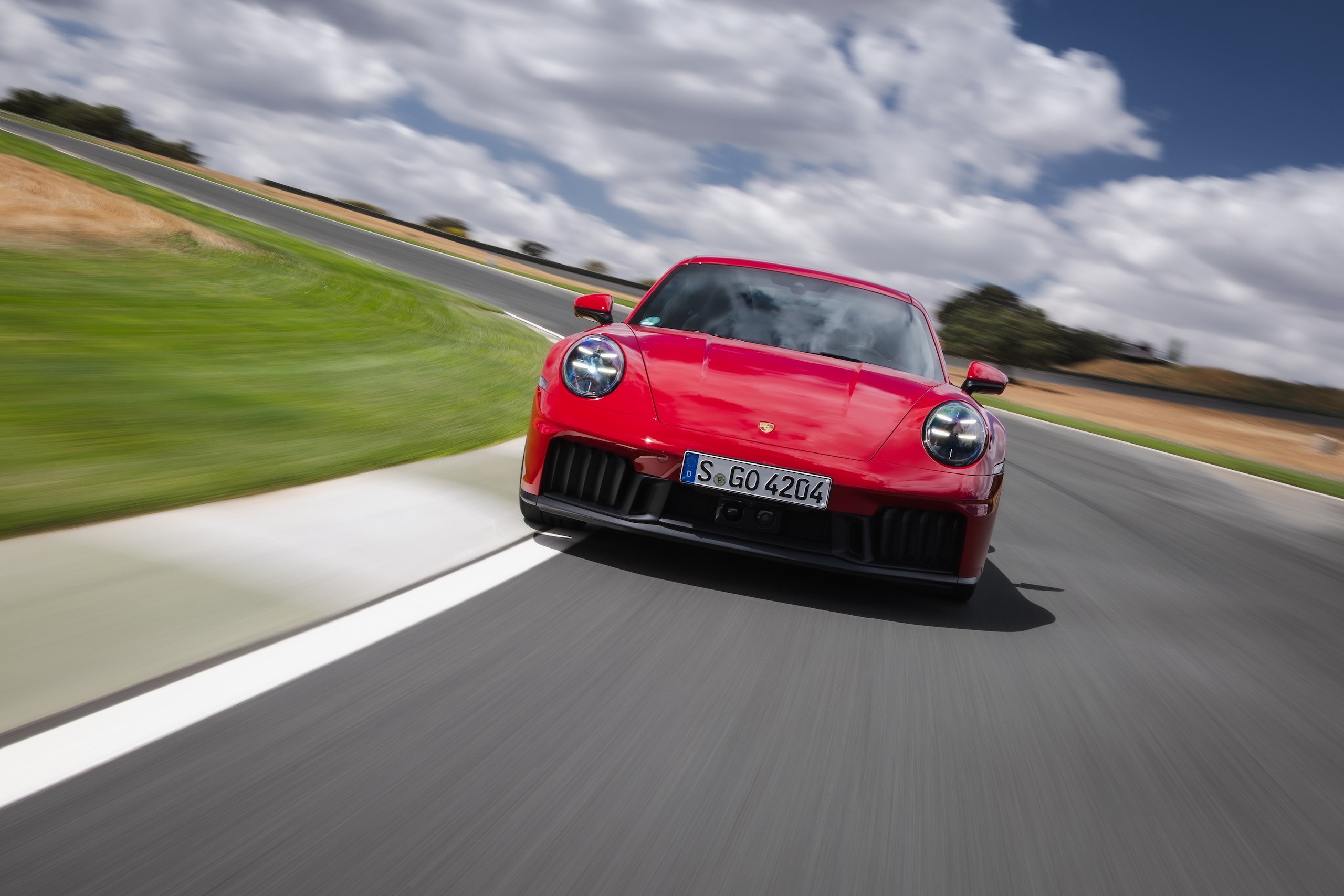
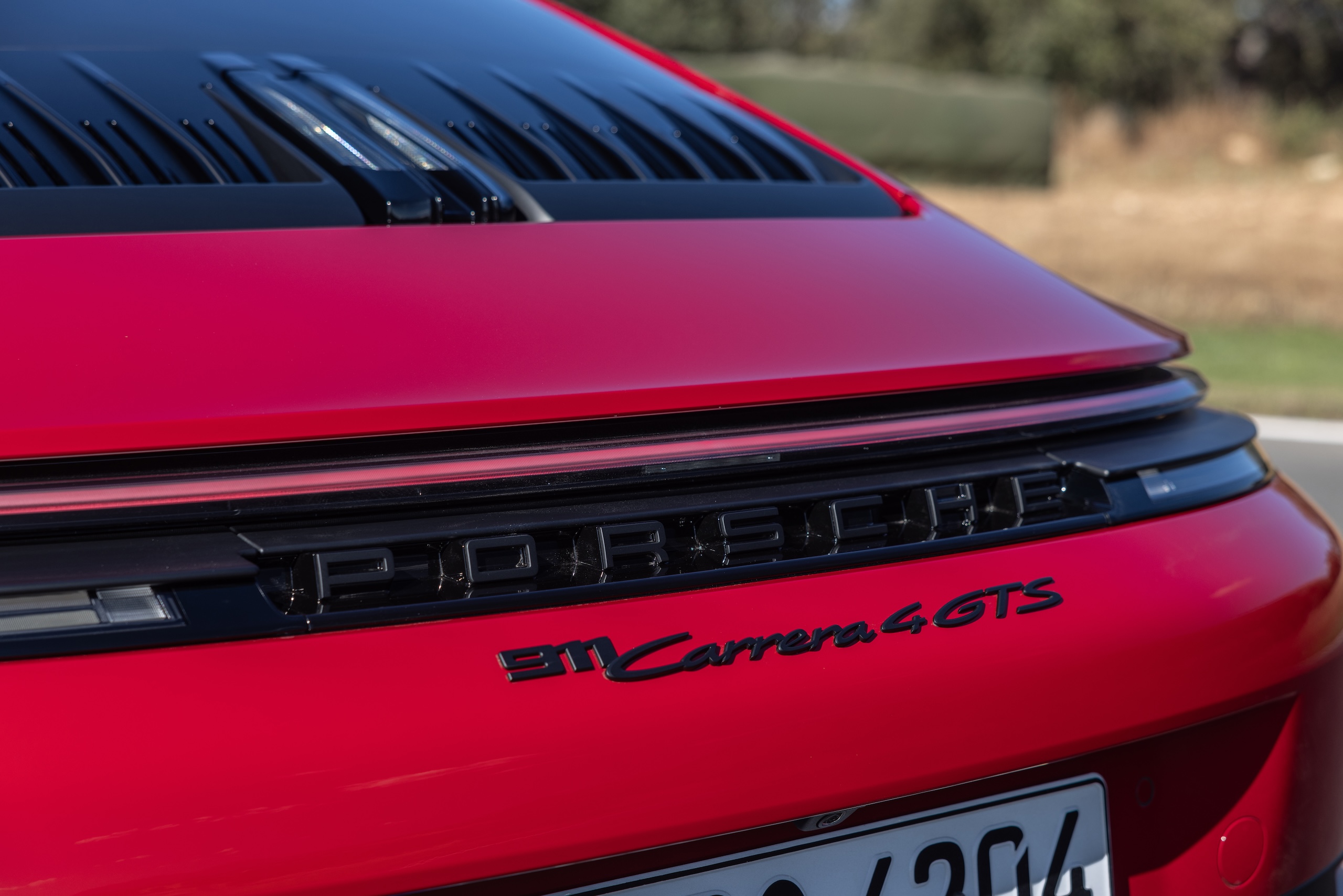
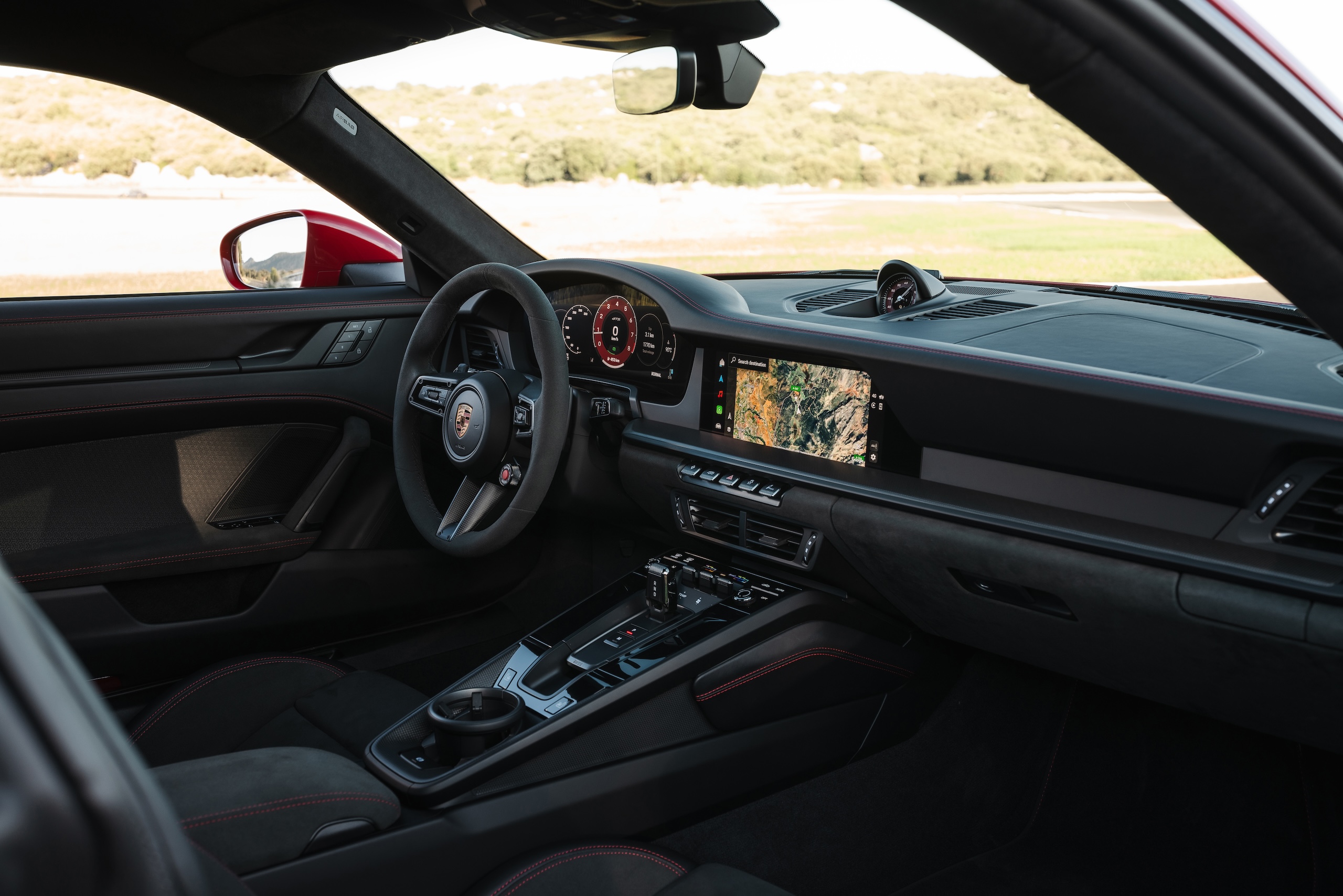
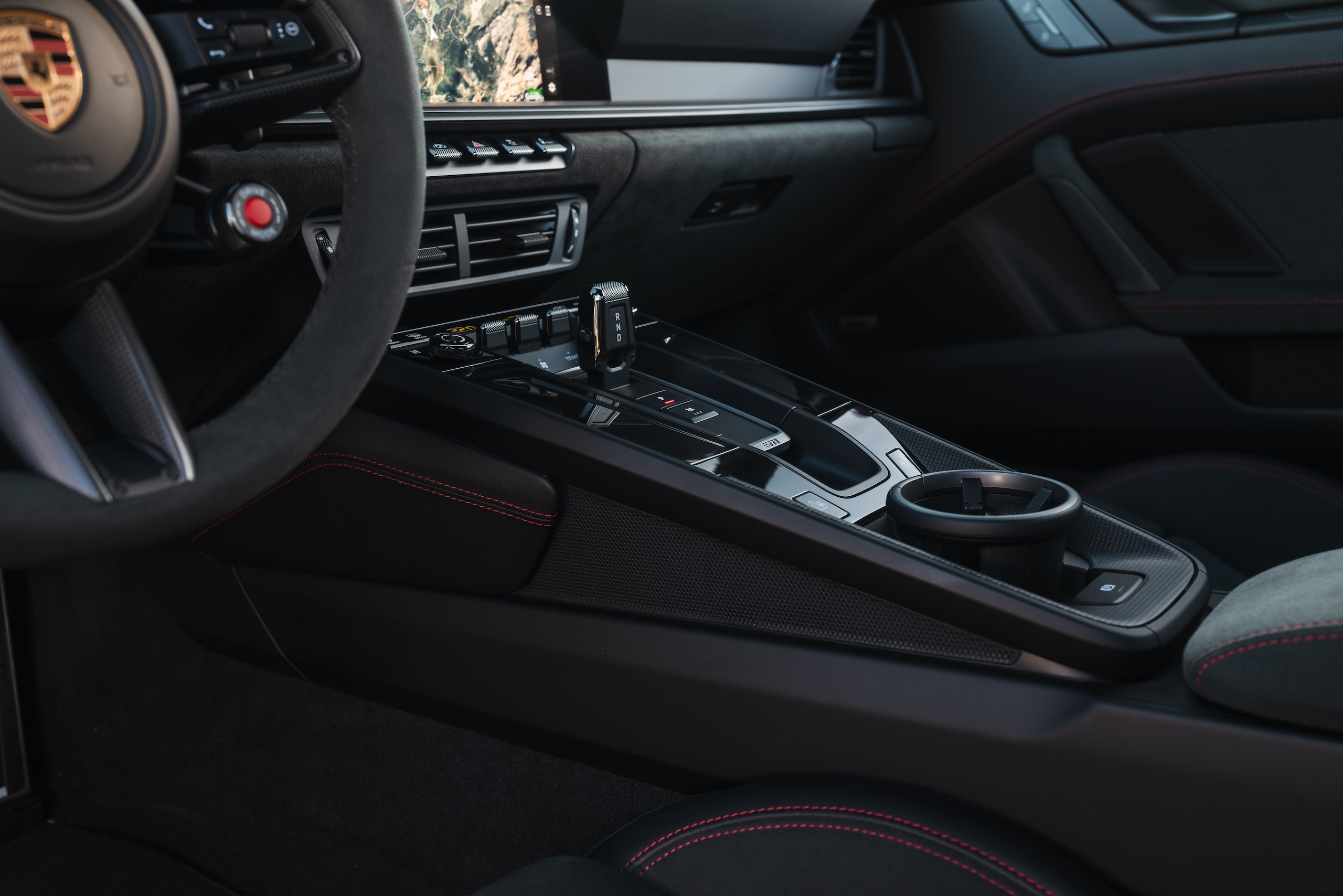
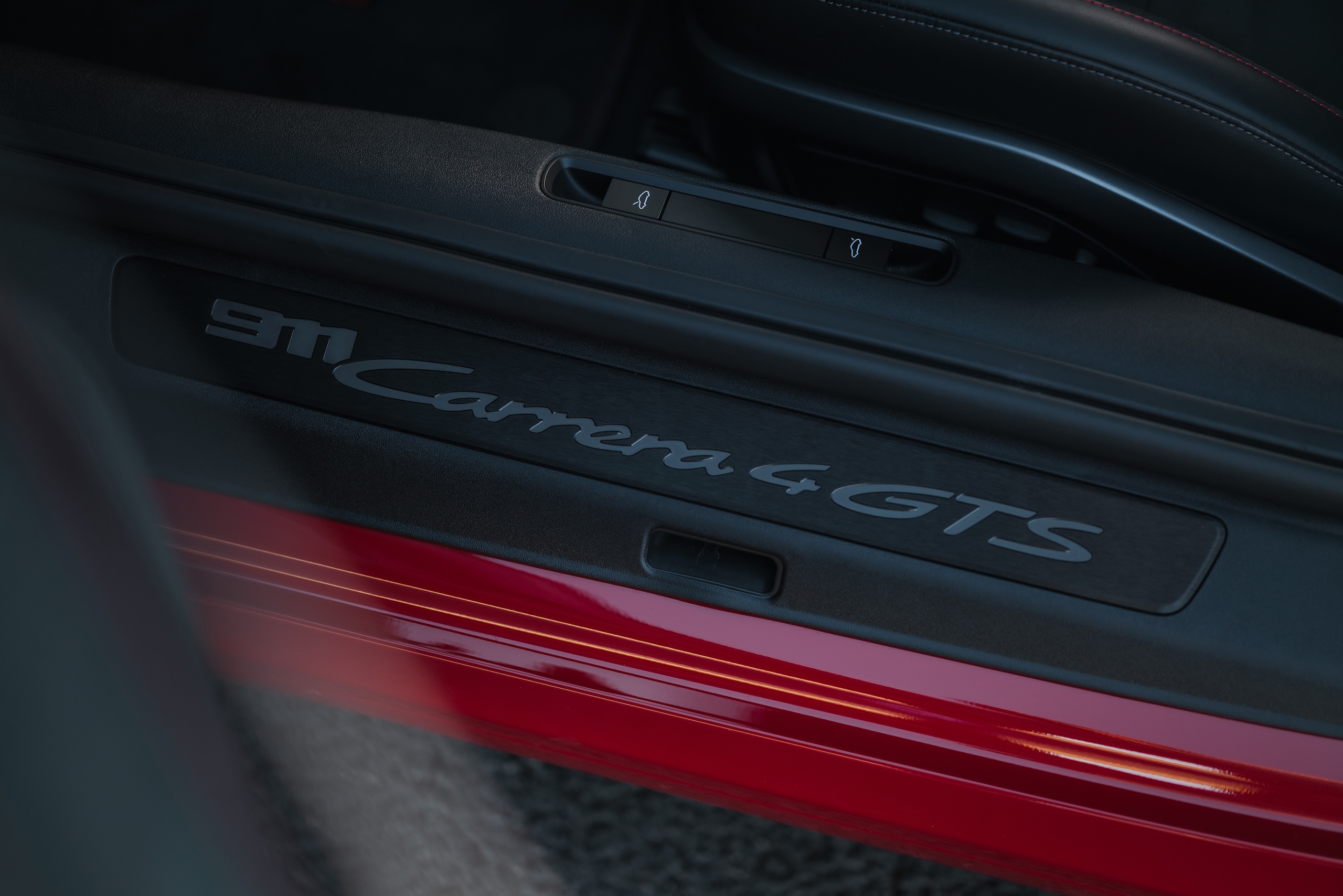
Do you have any advice or questions for the author about the 911 GTS? You can contact him here: chris.tsui@thedrive.com